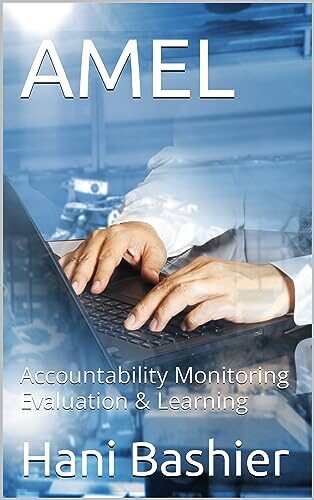Exploring the Types of Monitoring, Evaluation, Accountability, and Learning (MEAL) Approaches: A Comprehensive Guide
Monitoring, Evaluation, Accountability, and Learning (MEAL) is a critical component of project management in the development and humanitarian sectors. MEAL approaches help organizations to systematically collect, analyze, and use data to inform decision-making, enhance program effectiveness, and ensure accountability to stakeholders. In this comprehensive guide, we will explore the various types of MEAL approaches and their respective strengths and weaknesses, enabling organizations to select the most appropriate approach for their specific needs and contexts.
Understanding the Different Types of MEAL Approaches
MEAL approaches can be broadly categorized into the following types:
- Quantitative Approaches
- Qualitative Approaches
- Participatory Approaches
- Mixed-Methods Approaches
Each of these approaches has its unique strengths and weaknesses, and it is essential to understand the underlying principles and methods to effectively implement a MEAL system that meets the specific needs of a project or organization.
1. Quantitative Approaches
Quantitative approaches to MEAL focus on the collection and analysis of numerical data to measure project performance, assess the effectiveness of interventions, and track progress towards project objectives. These approaches often involve the use of standardized data collection tools and statistical analysis techniques to provide objective and reliable evidence of project outcomes. Some common quantitative methods used in MEAL include surveys, structured interviews, and performance monitoring systems.
Strengths of Quantitative Approaches
- Provide objective, reliable, and comparable data on project performance and outcomes
- Allow for the measurement of change over time and the assessment of the magnitude of project impacts
- Enable the generalization of findings to broader populations and contexts
Weaknesses of Quantitative Approaches
- May overlook the complexity and context-specific nature of development and humanitarian interventions
- Can be resource-intensive and time-consuming to implement, particularly for large-scale data collection efforts
- May not adequately capture the perspectives, experiences, and needs of project beneficiaries and stakeholders
2. Qualitative Approaches
Qualitative approaches to MEAL emphasize the collection and analysis of non-numerical data, such as textual, audio, and visual data, to explore the underlying processes, perceptions, and experiences of project beneficiaries and stakeholders. These approaches often involve the use of open-ended and flexible data collection methods, such as interviews, focus group discussions, and participant observation, to provide rich and context-specific insights into project outcomes and impacts. Some common qualitative methods used in MEAL include case studies, content analysis, and narrative analysis.
Strengths of Qualitative Approaches
- Capture the complexity, nuance, and context-specific nature of development and humanitarian interventions
- Provide rich and in-depth insights into the experiences, perceptions, and needs of project beneficiaries and stakeholders
- Enable the exploration of underlying processes, mechanisms, and dynamics that contribute to project outcomes and impacts
Weaknesses of Qualitative Approaches
- Can be subjective and prone to bias, as data collection and analysis often rely on the skills and perspectives of individual researchers
- May not provide comparable, generalizable, or statistically reliable evidence of project performance and outcomes
- Can be resource-intensive and time-consuming to implement, particularly for large-scale data collection efforts
3. Participatory Approaches
Participatory approaches to MEAL emphasize the active involvement and ownership of project beneficiaries and stakeholders in the design, implementation, and evaluation of MEAL systems. These approaches often involve the use of participatory data collection and analysis methods, such as community-led assessments, participatory mapping exercises, and group-based reflection activities, to empower beneficiaries and stakeholders to assess project outcomes and impacts. Some common participatory methods used in MEAL include Participatory Rural Appraisal (PRA), Most Significant Change (MSC), and Outcome Mapping.
Strengths of Participatory Approaches
- Foster ownership, empowerment, and capacity-building among project beneficiaries and stakeholders
- Enhance the relevance, responsiveness, and sustainability of MEAL systems by incorporating local knowledge, perspectives, and priorities
- Encourage transparency, accountability, and learning by facilitating dialogue and reflection among diverse stakeholders
Weaknesses of Participatory Approaches
- Can be time-consuming and resource-intensive to implement, particularly for large-scale and complex projects
- May face challenges related to power dynamics, participation biases, and the quality and reliability of data generated by non-professional researchers
- Can be difficult to standardize and compare findings across different contexts and stakeholder groups
4. Mixed-Methods Approaches
Mixed-methods approaches to MEAL integrate quantitative and qualitative methods to provide a more comprehensive and nuanced understanding of project outcomes and impacts. These approaches often involve the collection and analysis of both numerical and non-numerical data, using a combination of structured and open-ended data collection tools and techniques. Some common mixed-methods designs used in MEAL include convergent parallel designs, explanatory sequential designs, and exploratory sequential designs.
Strengths of Mixed-Methods Approaches
- Provide a more comprehensiveand nuanced understanding of project outcomes and impacts by combining the strengths of quantitative and qualitative methods
- Enable the triangulation of findings to enhance the validity, reliability, and credibility of MEAL evidence
- Enhance the applicability and relevance of MEAL findings by allowing for the exploration of complex and context-specific issues while maintaining comparability and generalizability across different settings
Weaknesses of Mixed-Methods Approaches
- Can be resource-intensive and time-consuming to implement, particularly for large-scale and complex projects
- Require advanced skills and expertise in both quantitative and qualitative research methodologies
- May face challenges related to the integration and synthesis of diverse data sources, methods, and findings
Conclusion
In conclusion, there are several different types of MEAL approaches, each with its unique strengths and weaknesses. To effectively implement a MEAL system that meets the specific needs of a project or organization, it is essential to carefully consider the underlying principles and methods of each approach and to select the most appropriate approach based on the project context, objectives, and resources.
Quantitative approaches provide objective, reliable, and comparable data on project performance, while qualitative approaches offer rich and in-depth insights into the processes, perceptions, and experiences of project beneficiaries and stakeholders. Participatory approaches emphasize the active involvement and ownership of project beneficiaries and stakeholders in MEAL processes, fostering empowerment, accountability, and learning. Mixed-methods approaches integrate quantitative and qualitative methods to provide a more comprehensive and nuanced understanding of project outcomes and impacts.
By understanding the strengths and weaknesses of each MEAL approach, organizations can make informed decisions about the most appropriate approach to adopt, ensuring that their MEAL systems effectively support project decision-making, enhance program effectiveness, and ensure accountability to stakeholders.







